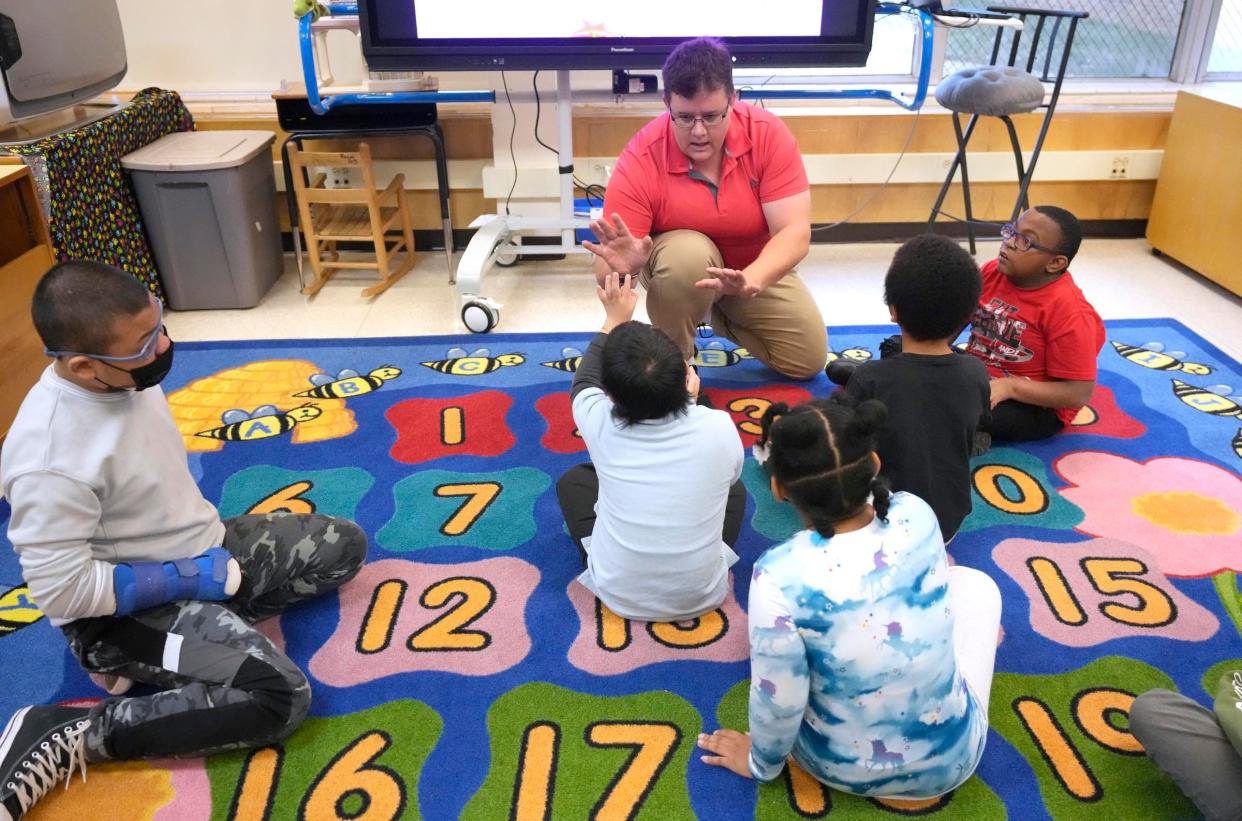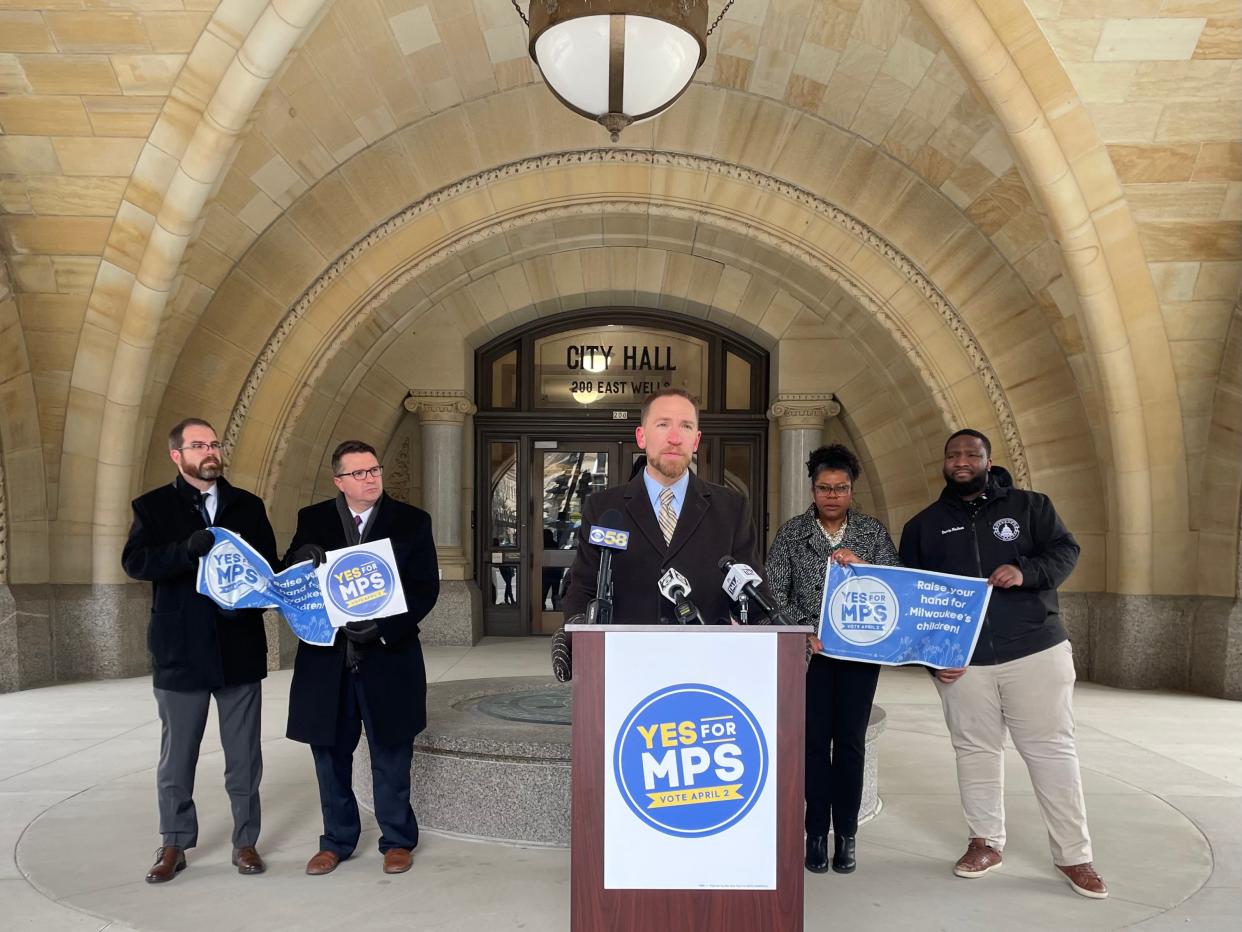Analysis shows full special education funding could avert some school referendums

If funding streams for special education covered the full costs of those services in Wisconsin schools, school districts could already have over 60% of the funding that they sought from voters in referendums this spring, an analysis by the office of state Sen. Chris Larson found.
The state reimburses schools for only about a third of their special education costs, leaving districts to pull from their general aid to cover the rest.
Larson, a Democrat from Milwaukee, called on Republican lawmakers to convene a special session to use some of the state's budget surplus to raise state reimbursement of special education costs to 90%. A Legislative Fiscal Bureau memo requested by Larson showed the move could cost about $970 million annually, if costs next year are similar to this year.
Republicans previously rejected calls to raise the reimbursement rate. Gov. Tony Evers had proposed raising the rate to 60%, after calls for an increase from a broad coalition of business executives, public school leaders and private school leaders. Republicans walked it back to 33%, a slight increase from the previous rate of 30%.
That leaves districts on the hook to cover the rest of their costs. Most districts had to pull between $1,000 and $2,000 in regular education funding for each district student to cover special education services in the 2019-20 school year, according to a report by the Education Law Center, a New Jersey-based nonprofit that advocates for equitable school funding.
Staff for Sen. John Jagler, R-Watertown, and Rep. Joel Kitchens, R-Sturgeon Bay, who chair the education committees in the state Legislature, said they did not immediately have a comment on Larson's proposal.
Special education funding could save schools most of what they sought in referendums, including in Milwaukee
Public schools are required by federal law to meet the needs of students with disabilities as outlined in individualized education plans, regardless of cost. In 2022-23, Wisconsin schools had over $1 billion in unreimbursed costs for special education.
Larson's office looked specifically at the 68 school districts that used referendums this spring to ask voters for the ability to raise tax funding for schools. Together, they asked voters for about $427 million.
The total unreimbursed special education costs for those districts was about $272 million. That's about 64% of the amount they collectively sought from voters.
Larson's office also found 16 school districts where unreimbursed special education costs were the same or higher than the amount sought in a referendum.

Looking at Milwaukee Public Schools, full special education funding would provide the district an additional $143.5 million, Larson's office found — about 57% of what the district sought from voters this April in its successful referendum, which will ultimately raise the district's spending authority by about $252 million.
In a letter to constituents Tuesday, Larson argued that with the passage rate for referendums declining across the state, the issue of special education is more urgent to sustain school budgets.
"This is not sustainable," Larson wrote. "People support their public schools, but there are limits to how much they are willing to raise their own taxes."
Costs are greater for high-poverty districts
The special education reimbursement shortfalls tend to be highest for districts with higher rates of poverty, an analysis by the Education Law Center found, as those districts have higher numbers of students with disabilities who need special education services.
The center compared Milwaukee Public Schools with the Whitefish Bay School District.
In the 2019-20 school year, 84% of MPS students qualified as low income, and 20% were identified as having disabilities. In Whitefish Bay, 2% of students were low income, and 11% had disabilities. MPS had to use about $2,000 of its general funding per student to cover special education costs, while Whitefish Bay had to pull about $1,100 per student.
Researchers have found a variety of reasons why students from lower-income families, and students of color, are more likely to need special education services. As a result of racist housing policies and governmental neglect, many children have been exposed to lead in their water or paint, live in food deserts and deal with other environmental stressors that affect their development. Many families also struggle to access early childhood education and other learning opportunities that wealthier families can attain.
How much does my district spend on special education?
A tool from the Education Law Center shows the amount each Wisconsin school district spent on special education in the 2019-20 school year, and how far short the state funding fell.
For districts that had a referendum this spring, Larson's office's data shows the referendum amounts and the amounts of special education costs that weren't reimbursed in the 2022-23 school year.
Contact Rory Linnane at rory.linnane@jrn.com. Follow her on Twitter at @RoryLinnane.
This article originally appeared on Milwaukee Journal Sentinel: Special education funding could avert some school referendums
